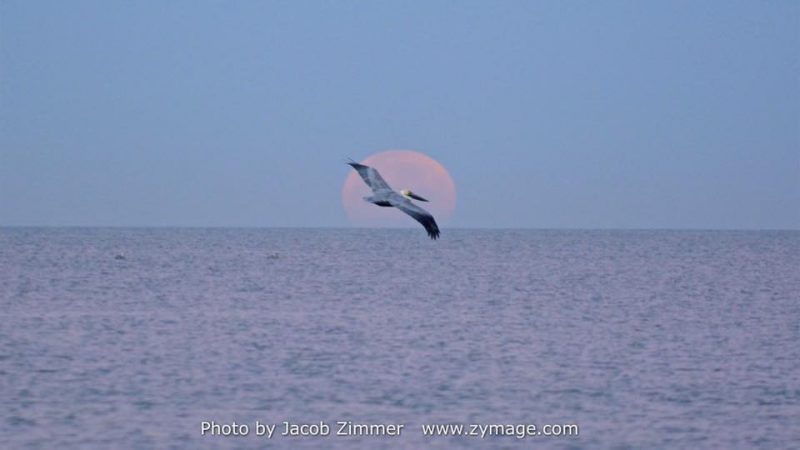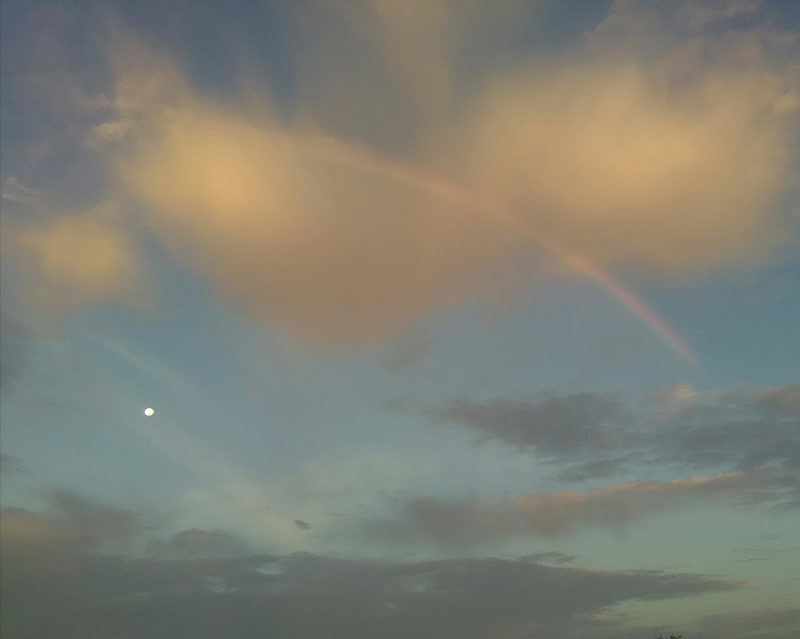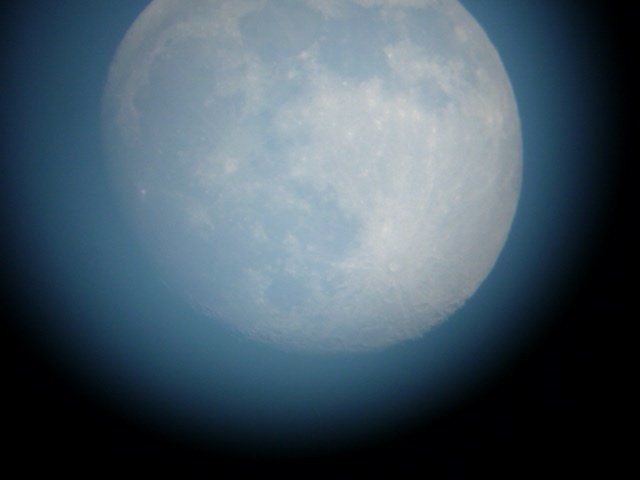
Image at top: Stefanie Bush caught the moon just after full – in the midst of anticrepuscular rays – over Lake Hollingsworth in Lakeland, Florida. She caught this image with an IphoneX and wrote:
I found it to be really lovely.
And so it is. This week is a wonderful opportunity for all of us to see a daytime moon. The Northern Hemisphere’s full Hunter’s Moon has passed. The moon is now in a waning gibbous phase, rising in the east later and later each evening. That means you can catch the moon over your eastern horizon before going to bed, and then over the western horizon after sunrise in the coming days.
When is the best time to see the moon in the sky during daylight hours? The answer is that the daytime moon is up there much of the time, but, because it’s pale against the blue sky, it’s not as noticeable as the moon at night. The most noticeable moon at night is a full moon. The recent full moon was on October 13 at 21:08 Universal Time; translate to your time zone. That means the time is now to catch a daytime moon, in the west in the morning.
The 2020 lunar calendars are here! Order yours before they’re gone. Makes a great gift.

Watch for the moon to light up your eastern sky at evening and then the western sky after sunrise.
Every full moon rises around sunset and sets around sunrise. But now the moon is in a waning gibbous phase – rising later each night – and setting in the west later each day after sunrise.
So, in the several mornings after full moon – after sunrise – look for the waning gibbous moon in the west during the morning hours. At mid-northern latitudes in North America, the moon will set about 1 1/2 hours after sunrise this morning (October 15, 2019), and will set one hour later each day thereafter.
These recommended almanacs can help you find the moon’s setting time in your sky
By the way, the moon is up during the day half the time. It has to be, since it orbits around the whole Earth once a month. A crescent moon is hard to see because it’s so near the sun in the sky. At the vicinity of last quarter moon about a week from now, you might have to crane your neck, looking up, to notice it after sunrise.
Ordinarily, we don’t look up to see the waning last quarter moon and waning crescent after sunrise. That’s one reason why people so often miss the moon during the day.
Day by day, the lighted portion of the waning gibbous moon will shrink and the half-lit last quarter moon will come on October 21. Watch for the daytime moon to climb higher and higher into the western sky after sunrise all this coming week!
Look for the moon in your eastern sky before going to bed this evening, on October 15, and then seek for the moon in your western sky after sunrise October 16.
Bottom line: Starting around October 15 or 16, 2019, look for the daytime moon in the west after sunrise.
Donate: Your support means the world to us
from EarthSky https://ift.tt/2PVUVYb

Image at top: Stefanie Bush caught the moon just after full – in the midst of anticrepuscular rays – over Lake Hollingsworth in Lakeland, Florida. She caught this image with an IphoneX and wrote:
I found it to be really lovely.
And so it is. This week is a wonderful opportunity for all of us to see a daytime moon. The Northern Hemisphere’s full Hunter’s Moon has passed. The moon is now in a waning gibbous phase, rising in the east later and later each evening. That means you can catch the moon over your eastern horizon before going to bed, and then over the western horizon after sunrise in the coming days.
When is the best time to see the moon in the sky during daylight hours? The answer is that the daytime moon is up there much of the time, but, because it’s pale against the blue sky, it’s not as noticeable as the moon at night. The most noticeable moon at night is a full moon. The recent full moon was on October 13 at 21:08 Universal Time; translate to your time zone. That means the time is now to catch a daytime moon, in the west in the morning.
The 2020 lunar calendars are here! Order yours before they’re gone. Makes a great gift.

Watch for the moon to light up your eastern sky at evening and then the western sky after sunrise.
Every full moon rises around sunset and sets around sunrise. But now the moon is in a waning gibbous phase – rising later each night – and setting in the west later each day after sunrise.
So, in the several mornings after full moon – after sunrise – look for the waning gibbous moon in the west during the morning hours. At mid-northern latitudes in North America, the moon will set about 1 1/2 hours after sunrise this morning (October 15, 2019), and will set one hour later each day thereafter.
These recommended almanacs can help you find the moon’s setting time in your sky
By the way, the moon is up during the day half the time. It has to be, since it orbits around the whole Earth once a month. A crescent moon is hard to see because it’s so near the sun in the sky. At the vicinity of last quarter moon about a week from now, you might have to crane your neck, looking up, to notice it after sunrise.
Ordinarily, we don’t look up to see the waning last quarter moon and waning crescent after sunrise. That’s one reason why people so often miss the moon during the day.
Day by day, the lighted portion of the waning gibbous moon will shrink and the half-lit last quarter moon will come on October 21. Watch for the daytime moon to climb higher and higher into the western sky after sunrise all this coming week!
Look for the moon in your eastern sky before going to bed this evening, on October 15, and then seek for the moon in your western sky after sunrise October 16.
Bottom line: Starting around October 15 or 16, 2019, look for the daytime moon in the west after sunrise.
Donate: Your support means the world to us
from EarthSky https://ift.tt/2PVUVYb




Aucun commentaire:
Enregistrer un commentaire